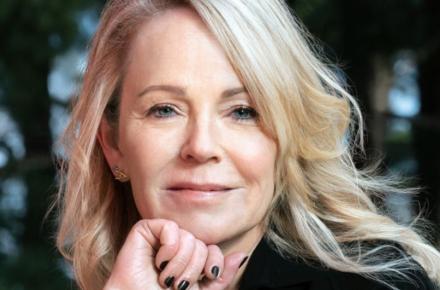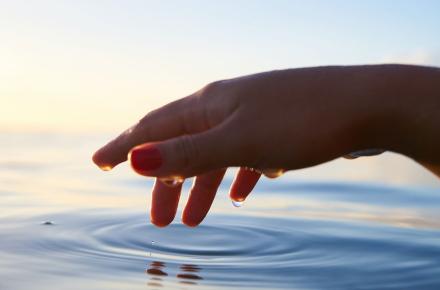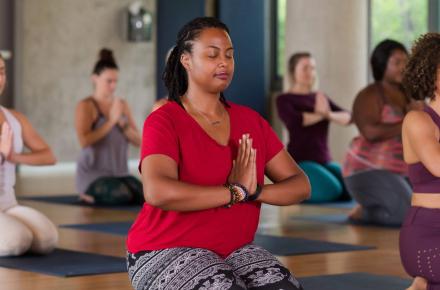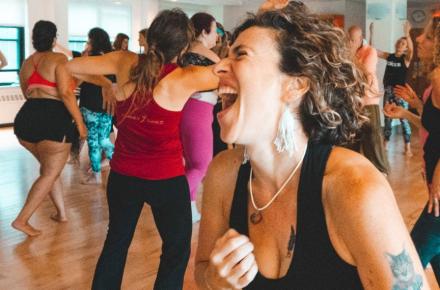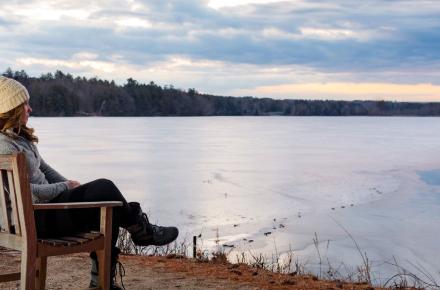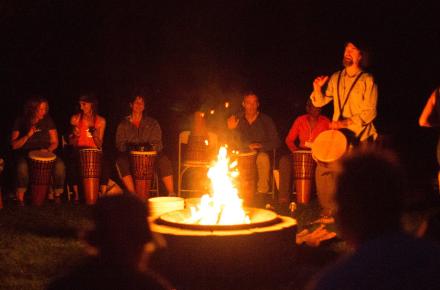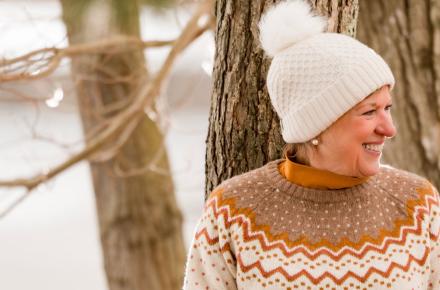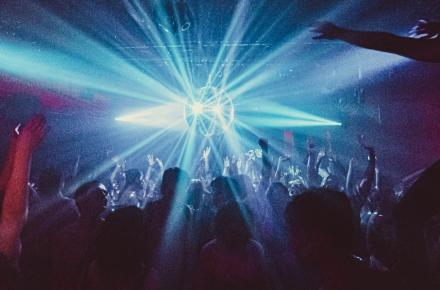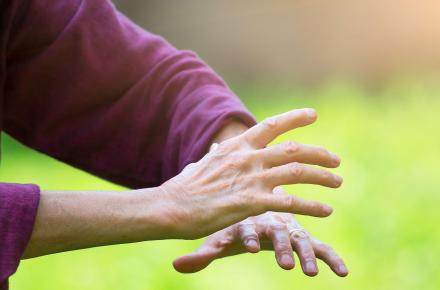The Relationship Between Continuum Practice and Dance


Continuum has affinities with many forms of art and ancient philosophy. As a dance artist and Authorized Teacher of Continuum, I have been deeply influenced, inspired, and supported by the practice and inquiry of Continuum. I met Continuum founder Emilie Conrad in a 1990 workshop and recognized the exploration of Continuum as something I seemed to intuitively understand, but wanted to learn about in greater depth. Continuum was the answer to a deep longing for a form that included my love of movement, science, spirituality, and explorations of the imagination and the psyche. The field of dance is a rich ground through which to explore Continuum. Rather than providing a dance technique or systemized therapeutic exercise, the practice of Continuum supports and enhances all creative processes.
The important and unique offering of Continuum is that it provides a methodology through which to learn how to be receptive to new and unknown patterns moving through oneself. The body becomes the creative laboratory and the creative material to mine, explore, and discover. Continuum provides a process through which one explores not only the form of the body, but also the scope of consciousness. An artist is intuitively engaged in meeting the unknown, and Continuum offers a process of experiencing and expressing what exists beyond the familiar patterns of the cultural matrix. It also establishes a context through which to discover new possibilities of movement.
Like many other dancers, I have been engaged throughout my life in making the imagination manifest through the body. I have always viewed the body as a living experiment through which the invisible can become known. My dance training, teaching, and choreography have been guided by the power and poetry of images. An image from a dream can inspire and propel a new work of choreography, as can a painting, a poem, music, or the movement of nature. In my role as a teacher of dance, I have considered my job to be primarily one of discovering and offering images that land and take root in each student. The body responds in an integrated holistic way as it incorporates an image. Discussing the body’s form in all of its intricacies and systems of muscles, bones, and circulation is important information to incorporate; however, that analysis alone leaves one objectifying the body and remaining separate from the voice of the body’s expression. From my lifelong experience in dance, I can say that it is the body’s nature to respond poetically, which may be another way to express the idea of resonance.
Many approaches to dance, somatics, and even meditation practice cultivate the poetic expression of the body through the incorporation and visualization of an image. Continuum goes into different territory than other practices because the understanding of the body as a process of movement without a boundary provides an entirely new context through which to identify one’s body. Joining with the movement motifs of our biology both literally and as a metaphor for creative processes is what distinguishes Continuum from other somatic and dance systems. These biological movement motifs are what link us to the fluid evolution of the planet and the resonant fields of more expanded states of experience.
So many of the early pioneers of modern dance and pivotal figures of older dance traditions believed in initiating movement from the interior of the body. However, the training of dancers in this culture (primarily in classical forms) seems to have been influenced by the industrial revolution and efficient technology of the time. Training is often based on a mechanized model of repetitious movement. Repetition is necessary to develop the specific skills of dance, but there is a danger of losing interest and sensory awareness of repeated movements. The focus of dance training is often on the external demands of learning to execute difficult technical skills, as well as coordinating and performing combinations of dance steps. Many dancers are taught that the ultimate goal of their training is to become "efficient and highly tuned machines able to be used by a choreographer to fulfill his or her vision." Sensing oneself from within is mentioned, but not always the primary focus of training. The openness to new methods and perspectives of the body is often more difficult for a dancer than for people who have not spent their life trying to "master" their bodies.
What Continuum offers is a process of learning how to inhabit the body more fully. Continuum does not try to apply a patterned system of movement on top of the existing pattern of rote routines. Continuum is a way to practice dissolving the specific limitations of those patterns, so that one can sense the movement and innate intelligence of one’s interiority, and bring the awareness of that presence to the movement language (ballet, modern dance, jazz, etc.) that one has chosen to study. In my work with Martha Graham, she spoke about her desire to express the interior landscape of the soul. I remember her saying that there is as much space on the inside of the body as in the entire universe. I have found that Continuum offers a way to become conscious of multiple dimensions of that interior landscape. Continuum does not replace dance training; it enhances it.
All performing artists are interested in effective and far-reaching communication. I have often said that one of my goals as an artist is to become so permeable that even the movement of my thoughts could be experienced and felt by an audience. Continuum offers a process through which one can have the experience of moving through planes of intersecting energy and thought rather than only moving through sequential events. One’s understanding of the possibilities of communication expands. The physical benefit gained from cultivating the refined skills of sensory awareness acquired in a Continuum practice is that the body becomes more capable of embodying the imagination. To join with the idea of the body as an endless presence interacting with the environment is the ultimate fulfillment of communication for a dancer. In its ideal form, the communication of dance should not be only a visual art, but also a sensuous kinesthetic experience for the viewer.
For the dance artist, Continuum offers a process and understanding of the body as a portal to realms of expression rather than just as an instrument of achievement. Continuum increases an essential quality of presence in dancers as they train, rehearse, and perform. It cultivates a deep rapport with one’s creativity in a way that enhances a dancer’s skill, both as an interpreter and as a performer. To understand the body as movement rather than form opens choreographers and dancers to infinite realms of movement. Continuum offers great support to the dance artist who has chosen dance out of a very deep longing to express the interconnectedness of life and move in ways that reveal, as I heard Martha Graham describe, "the inner landscape of the soul."
Ultimately, the practice of Continuum is a path of presence. It offers a way of participating with and meeting each emerging moment in life with interest and reverence. It is a path of becoming like the fluid systems in order to know their creative, life-giving ways.
Find out about upcoming programs with Robin Becker at Kripalu.




















